KeyTec® Enhanced Luciferase Detection Kit
Size: Luminescent Assay for Detecting Firefly Luciferase in Reporter Gene Assays
Price: $ 113
CAT.: A2000100N
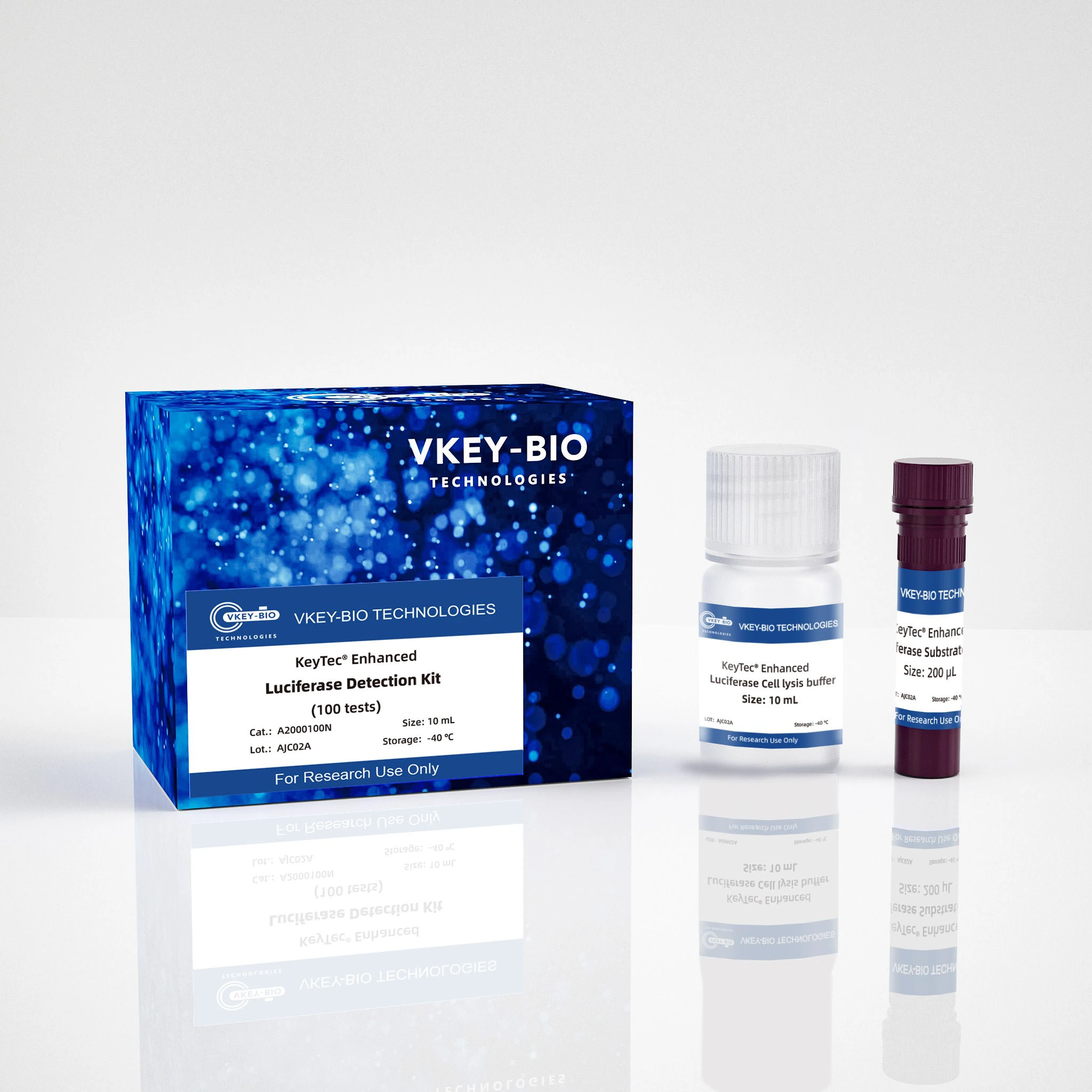
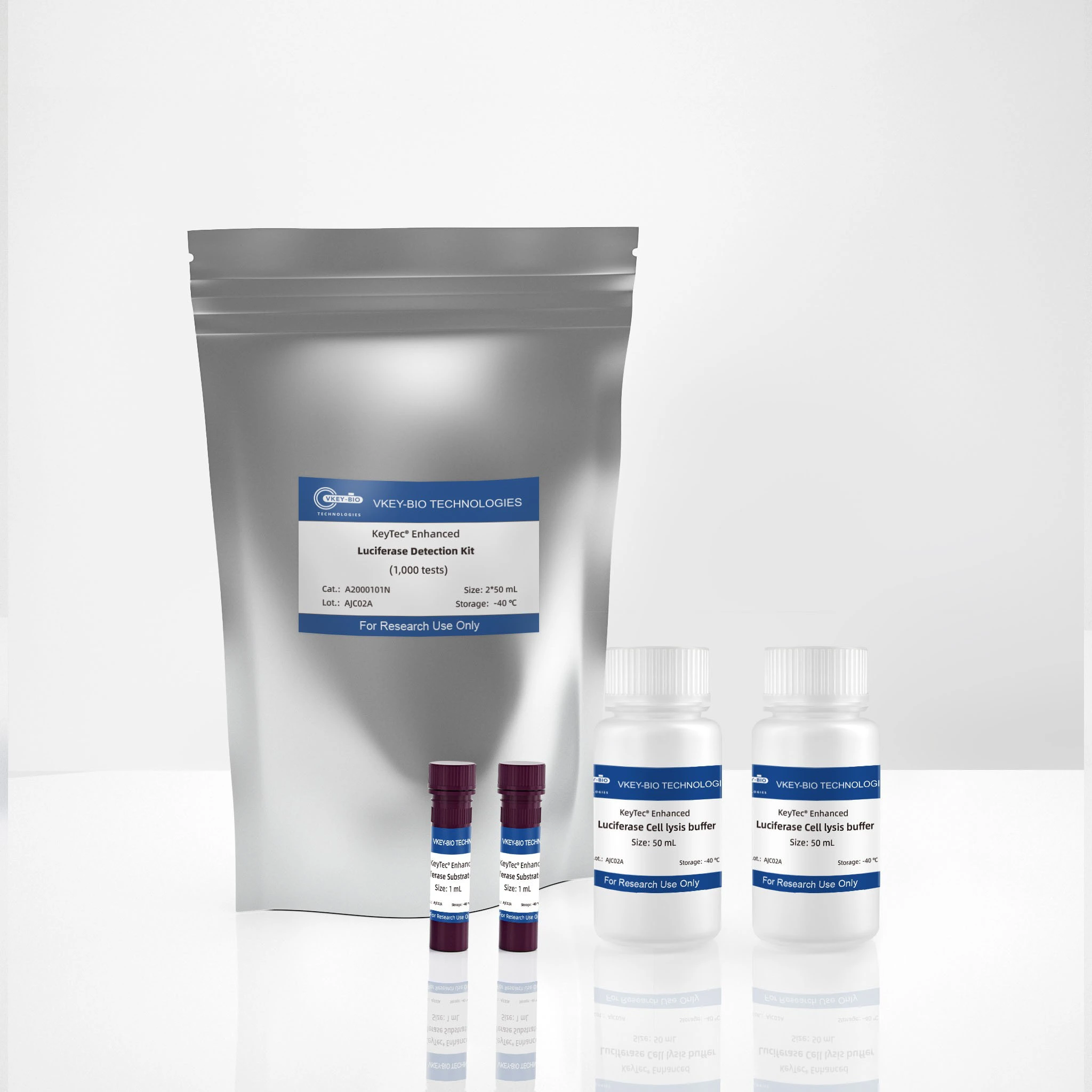
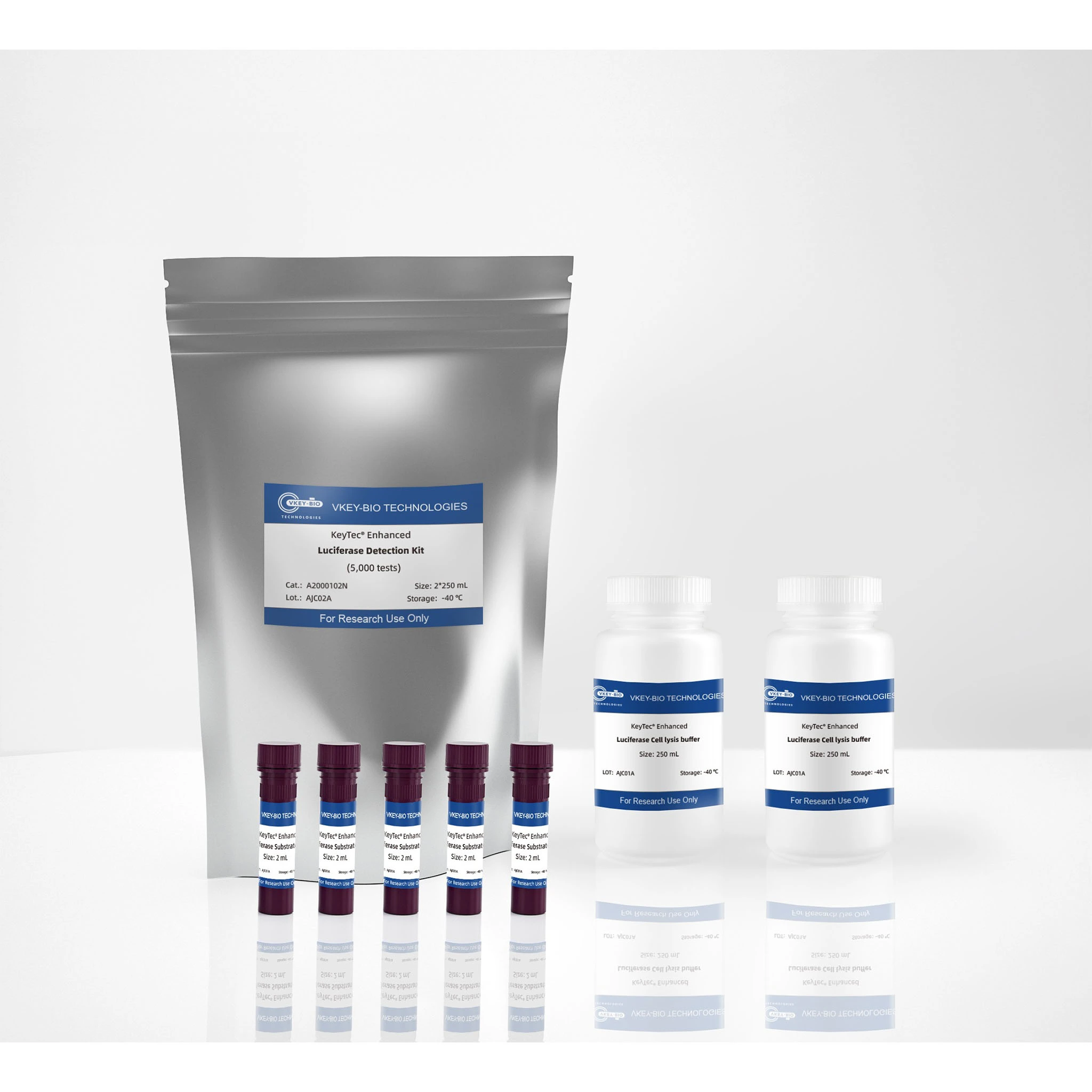

















• Easy to Use: A homogeneous assay - just follow the 'add-incubate-measure' process
• High Sensitivity: Wider linear range and robust luminescence signal
• The luminescence signal is not only high but also robust, with a half-life of approximately 1 h. It is suitable for most assay formats
• Easy to Use: A homogeneous assay - just follow the 'add-incubate-measure' process
• High Sensitivity: Wider linear range and robust luminescence signal
• The luminescence signal is not only high but also robust, with a half-life of approximately 1 h. It is suitable for most assay formats
• Easy to Use: A homogeneous assay - just follow the 'add-incubate-measure' process
• High Sensitivity: Wider linear range and robust luminescence signal
• The luminescence signal is not only high but also robust, with a half-life of approximately 1 h. It is suitable for most assay formats
• Easy to Use: A homogeneous assay - just follow the 'add-incubate-measure' process
• High Sensitivity: Wider linear range and robust luminescence signal
• The luminescence signal is not only high but also robust, with a half-life of approximately 1 h. It is suitable for most assay formats
luciferase Detection kit is designed for the sensitive and robust detection of firefly luciferase reporter gene assays. Simply mix the substrate with cell lysis buffer, add the mixture to the cells, and proceed to detect the firefly luciferase signal within the cells.
The detection principle is based on Luminescent technology. Within the kit, D-Luciferin reacts with firefly luciferase released by cells, generating a sensitive and robust luminescence signal. This process provides a highly sensitive, robust, and homogeneous assay for the detection of firefly luciferase reporter gene expression in mammalian cells.
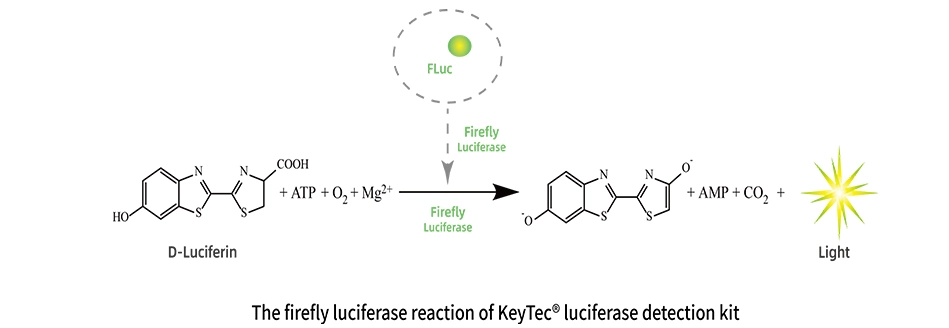
Use KeyTec® Enhanced Luciferase Detection Kit to detect the overexpression of firefly luciferase in the HEK293 cell line . The results showed a linear relationship between the luminescence signal and the number of cells. HEK293 cells, cultured in DMEM medium with 10% FBS, were serially diluted two-fold, starting from 50,000 cells per well in a 96-well plate. Perform the assay according to the procedure outlined in.“Assay Procedure”. Five minutes after adding the reagent, measure the luminescence signal using the Envision's Luminescence program. (Example program details include Mirror: Luminescence, Em filter: Luminescence 700, Measurement height: 6.5 mm, and Measurement time: 1 s).
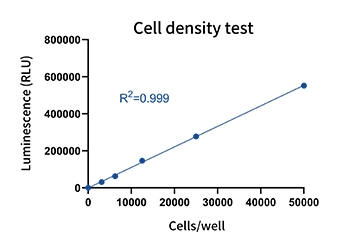
| CAT. | Description | Size |
| A2000100N | KeyTec® Enhanced Luciferase Detection Kit | 10 mL |
|
Each kit contains sufficient reagents to perform 100 tests of 100 μl/well. The kit contains the following components: • 1 × 200 μL KeyTec® Enhanced Luciferase Substrate 50X • 1 × 10 mL KeyTec® Enhanced Luciferase Cell lysis buffer |
||
| Certificate of Analysis | Limitations | Storage Conditions |
| LOT. | For research use only |

-40 ℃ |
KeyTec® Enhanced luciferase Detection kit is designed for the sensitive and robust detection of firefly luciferase reporter gene assays. Simply mix the substrate with cell lysis buffer, add the mixture to the cells, and proceed to detect the firefly luciferase signal within the cells.
The detection principle is based on Luminescent technology. Within the kit, D-Luciferin reacts with firefly luciferase released by cells, generating a sensitive and robust luminescence signal. This process provides a highly sensitive, robust, and homogeneous assay for the detection of firefly luciferase reporter gene expression in mammalian cells.

Use KeyTec® Enhanced Luciferase Detection Kit to detect the overexpression of firefly luciferase in the HEK293 cell line . The results showed a linear relationship between the luminescence signal and the number of cells. HEK293 cells, cultured in DMEM medium with 10% FBS, were serially diluted two-fold, starting from 50,000 cells per well in a 96-well plate. Perform the assay according to the procedure outlined in.“Assay Procedure”. Five minutes after adding the reagent, measure the luminescence signal using the Envision's Luminescence program. (Example program details include Mirror: Luminescence, Em filter: Luminescence 700, Measurement height: 6.5 mm, and Measurement time: 1 s).

| CAT. | Description | Size |
| A2000101N | KeyTec® Enhanced Luciferase Detection Kit | 2*50 mL |
|
Each kit contains sufficient reagents to perform 1,000 tests of 100 μl/well. The kit contains the following components: • 2 × 1 mL KeyTec® Enhanced Luciferase Substrate 50X • 2 × 50 mL KeyTec® Enhanced Luciferase Cell lysis buffer |
||
| Certificate of Analysis | Limitations | Storage Conditions |
| LOT. | For research use only |

-40 ℃ |
KeyTec® Enhanced luciferase Detection kit is designed for the sensitive and robust detection of firefly luciferase reporter gene assays. Simply mix the substrate with cell lysis buffer, add the mixture to the cells, and proceed to detect the firefly luciferase signal within the cells.
The detection principle is based on Luminescent technology. Within the kit, D-Luciferin reacts with firefly luciferase released by cells, generating a sensitive and robust luminescence signal. This process provides a highly sensitive, robust, and homogeneous assay for the detection of firefly luciferase

Use KeyTec® Enhanced Luciferase Detection Kit to detect the overexpression of firefly luciferase in the HEK293 cell line . The results showed a linear relationship between the luminescence signal and the number of cells. HEK293 cells, cultured in DMEM medium with 10% FBS, were serially diluted two-fold, starting from 50,000 cells per well in a 96-well plate. Perform the assay according to the procedure outlined in.“Assay Procedure”. Five minutes after adding the reagent, measure the luminescence signal using the Envision's Luminescence program. (Example program details include Mirror: Luminescence, Em filter: Luminescence 700, Measurement height: 6.5 mm, and Measurement time: 1 s).

| CAT. | Description | Size |
| A2000102N | KeyTec® Enhanced Luciferase Detection Kit | 2*250 mL |
|
Each kit contains sufficient reagents to perform 10,000 tests of 100 μl/well. The kit contains the following components: • 2 × A2000102N KeyTec® Enhanced Luciferase Detection Kit (5,000 tests) |
||
| Certificate of Analysis | Limitations | Storage Conditions |
| LOT. | For research use only |

-40 ℃ |
KeyTec® Enhanced luciferase Detection kit is designed for the sensitive and robust detection of firefly luciferase reporter gene assays. Simply mix the substrate with cell lysis buffer, add the mixture to the cells, and proceed to detect the firefly luciferase signal within the cells.
The detection principle is based on Luminescent technology. Within the kit, D-Luciferin reacts with firefly luciferase released by cells, generating a sensitive and robust luminescence signal. This process provides a highly sensitive, robust, and homogeneous assay for the detection of firefly luciferase reporter gene expression in mammalian cells

Use KeyTec® Enhanced Luciferase Detection Kit to detect the overexpression of firefly luciferase in the HEK293 cell line . The results showed a linear relationship between the luminescence signal and the number of cells. HEK293 cells, cultured in DMEM medium with 10% FBS, were serially diluted two-fold, starting from 50,000 cells per well in a 96-well plate. Perform the assay according to the procedure outlined in.“Assay Procedure”. Five minutes after adding the reagent, measure the luminescence signal using the Envision's Luminescence program. (Example program details include Mirror: Luminescence, Em filter: Luminescence 700, Measurement height: 6.5 mm, and Measurement time: 1 s).

| CAT. | Description | Size |
| A2000103N | KeyTec® Enhanced Luciferase Detection Kit | 4*250 mL |
|
Each kit contains sufficient reagents to perform 10,000 tests of 100 μl/well. The kit contains the following components: • 2 × A2000102N KeyTec® Enhanced Luciferase Detection Kit (5,000 tests) |
||
| Certificate of Analysis | Limitations | Storage Conditions |
| LOT. | For research use only |

-40 ℃ |